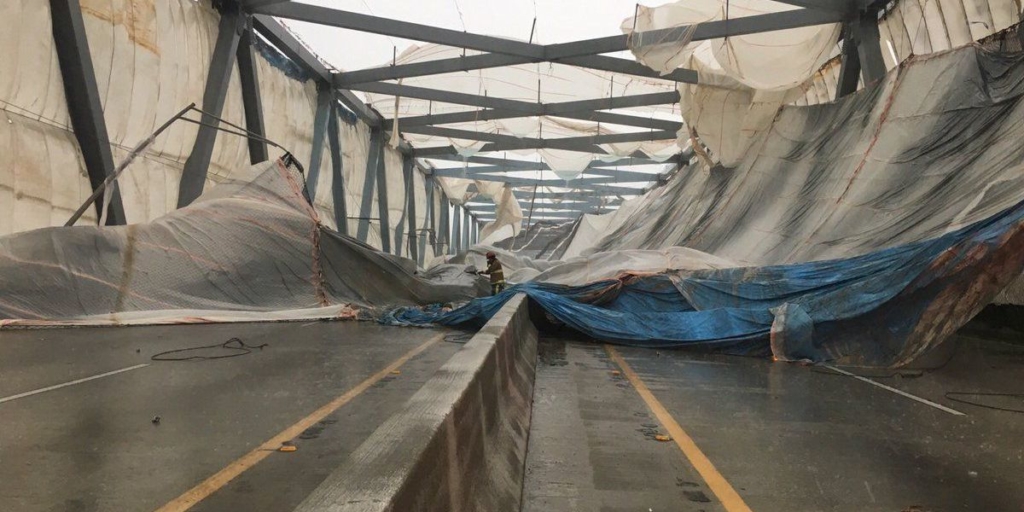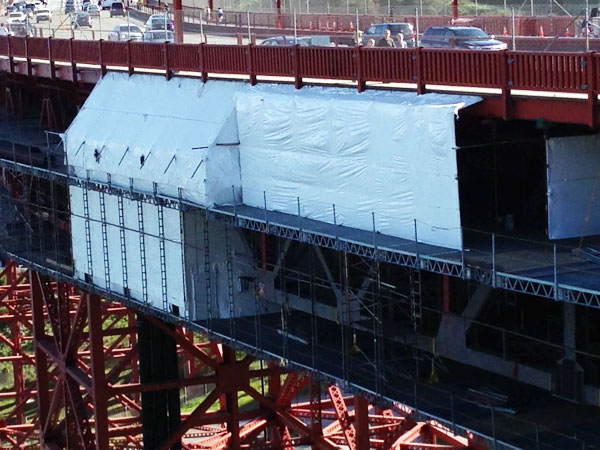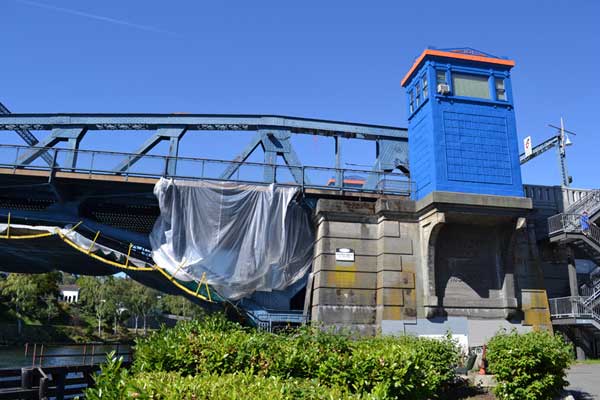Construction Tarps Vs. Construction Containment
Jul 3rd 2019
Class One provides a high level of emissions control with impenetrable walls, fully sealed joints, airlocks or re-sealed airways and negative air achievement.

Don Holt Bridge Tarp Collapse in July 2017
Class one containment can only really be achieved through heat shrink wrap. Class one containment is defined as keeping all hazardous materials from escaping the containment and falling into our lakes, rivers or into the air we breathe. Hazardous materials include lead based paint, asbestos and blasting grit.

Sturdy Class 1A Containment on Golden Gate Bridge
The main difference between heat shrink wrap and tarps. Tarps do not form fit to the object they’re covering, nor do they form a tight fitting bond between one another which leaves area for wind and rain to expose the containment. By not being tight fitting, tarps constantly beat themselves up by flapping wind. The 24 hour a day stress from the wind causes the tarps to break down. Rips start appearing or grommets give way ruining your containment. Once the ripping of grommets and tarps begin, it only gets worse. Industrial painters and sand blasters have to spend their morning fixing holes and grommets creating more work and less time completing the job. When they get tired of this, most industrial contractors call Pro-Tect for our 25 years of experience in technical service. 800-889-WRAP. Pro-Tect has found value in creating a cost effective solution to turning your company into a shrink wrap company.

Class One Containment Not Achieved
If you have gotten a shrink wrap quote in the past, and it was outrageous, give us a call at 800-889-WRAP. We will train your crew on-site to do the installation of heat shrink film.

